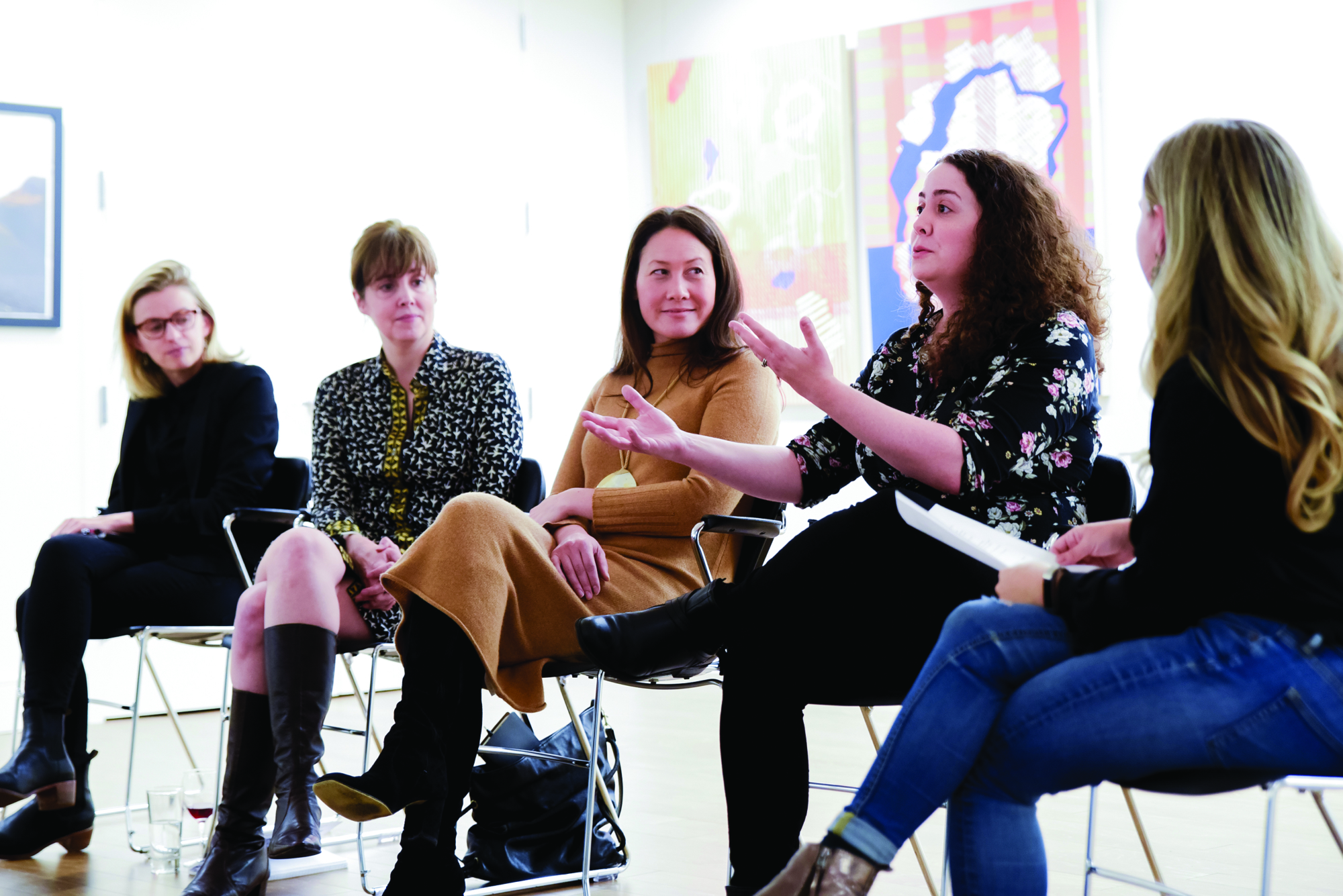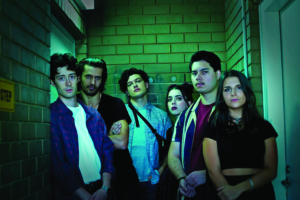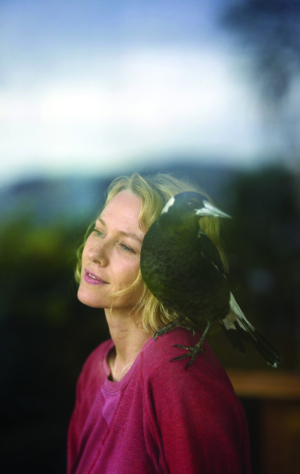Held over October and November 2019, the inaugural Women in Screen Workshop was an industry-focused lab for emerging women filmmakers based in New York. An initiative of the Australian International Screen Foundation, the workshop serves as an expansion of its program of events – notably, the annual Australian International Screen Forum – along with scholarships and mentorships. Of the eight selected workshop participants, Carrie Anderson, Stef Dawson, Zoe Rae and Jess Robinson were from Australia, and Danae Grandison, Tonya McCornell, Stephanie Stender and Katherine Tolentino were from the United States. Each is either a director, producer, writer or combination thereof, and each has some experience in the industry and projects currently under development. Organised by industry programs producer Laura D’Augello, the 2019 workshop included sessions led by industry advisers on topics such as pitching, contracts and financing. Focusing on education, network-building and practical guidance, the program took a hands-on approach to developing skills and strategies that are a foundation for sustainable, long-term careers.
The initial concept for the workshop came about in a conversation between D’Augello and Laura Luckenbaugh, manager of international programming at AMC Networks. Discussing how someone could have their pilot picked up and become a showrunner with no formal training to facilitate the transition, they realised the value of industry-led guidance. As an emerging producer herself, D’Augello acknowledged the hurdles women face when trying to break into the industry – including that, while there are numerous labs focusing on craft, there is less education about the business aspects of filmmaking. So she reached out to women in the industry to offer insights into making smart business decisions – ‘A topic often overlooked in film school curriculums,’ Robinson points out. Rae reiterates, ‘It’s one thing to work on script or process in traditional labs, but this one gave us tools bigger than individual projects.’ All the participants agree that the program addressed gaps in their training and experience. Anderson offers that the workshop opened her eyes ‘to a very different – commercial – approach to development’:
I saw creative ways to raise finance like branding in the broadest sense, where a company backs a film because it aligns with their core values, and it was exciting to feel [that] everything [was] driven by what will sell to an audience – not a funding body. That’s a huge difference in creative freedom for a writer.
Meggie Palmer, PepTalkHer founder, led the first session on developing confidence and leadership skills. ‘It can be hard to shake off impostor syndrome as a female creative, but, after this program, I have to take myself seriously because Laura did; these advisers did,’ says Rae. The women learned practical techniques, including for negotiating pay, to make sure their voices are heard in the workplace. Grandison, a Jamaican-born, Brooklyn-based filmmaker, reports having received ‘instrumental feedback and the confidence one needs to step into a room to properly sell myself and my project’, while McCornell enthuses that all of the participants ‘left that session feeling like we could tackle anything’. This encouragement to advocate for themselves and their projects continued throughout the workshop. For instance, lawyer Sara Gajic, CEO of Revingstone Street Films, who advised on business and legal affairs, emphasised the importance of women negotiating the best deal possible ‘so as to ensure […] a sustainable career that rivals [that of] their male counterparts with the same level of experience’. Offering a breakdown of what to look for in contracts, she stressed the importance of emerging filmmakers understanding what they sign, which the participants agree was immensely helpful. ‘It’s the kind of information one normally has to figure out on one’s own, via trial by error,’ says Tolentino, a writer/director from the San Francisco Bay Area. As a screenwriter, Anderson now specifically requests the opportunity to work on rewrites, explaining, ‘I’ll never sign a contract again that denies me the right to one draft and my name staying on something I created.’ Victoria Hill, executive producer for Fibonacci Films, similarly advocated for negotiating contracts in her session on financing. In a broad discussion about topics including investors, soft funding and tax incentives, Hill’s overriding advice was that if something sounds too good to be true, it is.
The importance of understanding pitching was highlighted by Jamie Zelermyer, producer of IFP Week and president of New York Women in Film & Television, who helped the participants craft a one-minute pitch for their projects. Robinson describes her feedback as ‘actionable, encouraging and [advice that] clearly came from a real-world perspective […] This session turned all our nervous energy into tactical strategies to improve.’ Pitching was also central to a session on branded content, co-run by ACE Content development producer Olivia Mayberry and R/GA creative director Nadia Saccardo. Discussing opportunities for filmmakers in the commercial sector, which many end up combining with their own projects, they advised on topics like pitch decks, timelines and the benefits of developing relationships. Mayberry tells me that ‘as brands are investing in content more than ever, it is helpful for filmmakers to understand how they can collaborate’. She also points out that ‘the gap between brand and entertainment work is not as big as it may seem’.
In 2018, of the 250 highest-grossing movies in the US, women made up only 26 per cent of producers, 16 per cent of writers, 8 per cent of directors and 4 per cent of cinematographers.
Exploring the topic of distribution, Jess Mills, head of marketing and distribution at Breaker, and Nicole Schilder, head of marketing at Magnolia Pictures, offered advice on identifying and targeting audiences. They advised looking beyond just one demographic to different circles that the film could be promoted to. For example, they suggested McCornell reach out to non-profits and community groups that might support her documentary on teen suicide. For the genre feature that Robinson is writing, directing and producing, Schilder noted that a passionate audience makes it one of the easiest categories to market, providing a list of festivals to approach. ‘The more you can package your film and speak about it as a product with a valuable audience, the easier it will be to get funding all the way up to distribution,’ Mills tells me. The discussion also turned to the influence of streaming, which is shaping changes in distribution and, increasingly, production. Schilder expressed tentative optimism about these changes, as they offer more options for filmmakers, particularly platforms targeting specific audiences such as horror video-on-demand service Shudder. She suggests to me that the upheaval in the industry caused by streaming might help promote more diversity and ‘serve as an opportunity for change to be implemented more quickly, on a larger scale’.
In an industry that is opaque and hard to break into, mentorship is invaluable; and, in the participants’ view, the honesty and generosity of the advisers was a vital aspect of the workshop. In the final session, Luckenbaugh, Tina Brown (writer and director at Sweet Ninja Films), Amelia Chappelow (senior producer at Spotify) and Kathryn O’Kane (director and producer at Busy K and showrunner of Salt Fat Acid Heat) offered insights into their careers, before participants pitched them their projects and received feedback one on one. For Dawson,
having so many women be willing to be so honest and open about the hurdles they have faced and mistakes they have made so we don’t make the same, as well as detailing the exact path to their success, [was] incredible.
The advisers pointed to the challenges facing women in the industry, but also how initiatives like this workshop could address these. D’Augello began with the importance of access to networks, noting that work often arises from introductions: ‘Creating a pathway to these industry experts, we are bridging the gap [between] talent and industry.’ Mayberry agrees that hiring is usually done through referrals, suggesting, ‘We need a diverse core team to prioritise hiring different kinds of people in the workplace. Otherwise, we’ll just keep hiring the same kinds of people.’ Mills proposes that one of the biggest challenges for women is gaining support from legacy institutions, with a continued failure in those quarters to recognise that there is an audience for more diverse storytelling. ‘It’s absolutely shocking to me […] how difficult it can be for women to find support from the industry,’ she says.
A point that arose repeatedly in discussions in and about the workshop was that women need increased representation across all roles in the industry. Gajic notes the influx of opportunities for women such as Gender Matters, the Australian Government–supported program to address gender imbalance in the industry, allocating development and production funding to women-led projects. However, change is slow, and women are still underrepresented in the majority of roles. In 2018, of the 250 highest-grossing movies in the US, women made up only 26 per cent of producers, 16 per cent of writers, 8 per cent of directors and 4 per cent of cinematographers. Of the 112 directors of the 100 top-grossing films of 2018, 108 were men and four, women, a ratio of 27 to 1; this is about the same across the top 1200 films from 2007 to 2018, where just 4 per cent of directors were women. And of the top 300 films from 2016 to 2018, many roles were almost exclusively filled by men, including key grip (four women, 272 men), best boy electric (one woman, 292 men) and gaffer (zero women, 281 men).[1]‘2018 Statistics’, Women and Hollywood, 2018,<http://assets.uscannenberg.org/docs/inclusion-in-the-directors-chair-2019.pdf>, accessed 22 May 2020. While the situation is slightly better in Australia – statistics from Screen Australia reveal that, between 2012 and 2018, women made up 17 per cent of directors, 23 per cent of writers and 36 per cent of producers in feature dramas[2]‘Screen Australia Exceeds Gender Matters Target and Announces New KPI’, media release, Screen Australia, 21 August 2019, <https://www.screenaustralia.gov.au/sa/media-centre/news/2019/08-21-gender-matters-target-exceeded-new-kpi>, accessed 22 May 2020.– and women-led stories have been gaining visibility, crews remain male-dominated here. ‘The best way to overcome this is to make sure that communities are being created and fostered,’ Mills notes. ‘Sharing our experiences openly is a first step toward dissolving exclusivity, but opportunities will continue to be limited until women and people of colour are more represented at large,’ Schilder adds. ‘It’s hard to imagine what an equal representation might look like, as it’s far from what we’re seeing now.’
Of the many opportunities that New York offers international filmmakers, financing is a major one. New York State has one of the biggest independent cinema markets in the world: over US$30 billion has been spent by film and television productions in the state since 2011.[3]‘From Montauk to Buffalo, New York State Is Camera-ready and Film-friendly’, Empire State Development website, <https://esd.ny.gov/industries/tv-and-film>, accessed 22 May 2020. There are numerous funding initiatives available, including the New York State Film Production Tax Credit program, which subsidises production by US$420 million annually.[4]See Scott Macaulay, ‘New York State Film Tax Incentive Renewed but Trimmed; Many Lower-budget NYC Independent Films No Longer Eligible’, Filmmaker Magazine, 9 April 2020,<https://filmmakermagazine.com/109543-new-york-state-film-tax-incentive-trimmed-many-lower-budget-independent-films-will-no-longer-be-eligible/>, accessed 22 May 2020. The City of New York also offers benefits, such as the ‘Made in NY’ Marketing Credit program, which provides local advertising. There is also access to a huge amount of private equity in New York, unlike in Australia, where filmmakers often rely on government funding. As Gajic points out,
films are financed much more freely [in New York …] Tax credits aren’t dependent on an intent to theatrically distribute as [is the case] in Australia, which means producers are able to get a certain portion of their budget back so long as they meet qualifying spend and the other eligibility requirements.
But it is not just about the money; more opportunities are needed, too. Rae explains that ‘Australian film and TV gives me the impression of a very tight circle, a doors-closed meeting. They’re not taking chances on people or stories at the rate that the US market is.’
The Australian participants have inevitably faced differences when working in the US. ‘There is a cultural difference here in terms of how to “represent yourself”,’ Mills muses. ‘In Australia, we fear “tall-poppy syndrome”, but in the US, it is a necessary evil to fight for yourself, your opinion, your beliefs, your worth, your art.’ D’Augello also points out that the industry in New York moves at a much faster pace and that things can come together very quickly. She suggests that, compared with the studio system in Los Angeles, the strong independent film market in New York aligns more closely with the Australian industry. Several of the participants have lived in Los Angeles, including Dawson, who insists her feature project would never have arisen if she had not switched coasts. ‘There is something about NYC that inspires me in a way LA doesn’t.’ The atmosphere of New York is a persistent thread throughout discussions with the participants. Robinson describes ‘an energy in NYC […] You can’t help but collide and connect with people here (good and bad, but never boring).’ There’s a shared view that the strong culture of support in New York for women in film has an appeal, which this workshop draws from and nurtures.
All the participants characterise this workshop as a turning point in their careers – the word ‘life-changing’ comes up frequently. ‘I now know how to surround myself with the right team to make a film a reality,’ says Dawson, ‘and I am more fired up than ever to do that!’ Similarly, McCornell insists that ‘after being in this lab, I do know [my] project will get made’. The impact of the workshop seems twofold: resources and guidance were shared by advisers and participants, leading to collaboration and community-building within an international network; and the program also encouraged the filmmakers to advocate for themselves and their projects. Tolentino describes it as a fast track ‘that really helps creators like us, as we are so often just toiling away in the dark, unsure if anyone will ever see our stuff!’ Robinson, meanwhile, finds that the workshop helped ‘hone my project, tweak my pitch and give me more avenues to explore to finally get it made […] I feel inspired to make some calculated moves that will hopefully pay off.’
Endnotes
| 1 | ‘2018 Statistics’, Women and Hollywood, 2018,<http://assets.uscannenberg.org/docs/inclusion-in-the-directors-chair-2019.pdf>, accessed 22 May 2020. |
|---|---|
| 2 | ‘Screen Australia Exceeds Gender Matters Target and Announces New KPI’, media release, Screen Australia, 21 August 2019, <https://www.screenaustralia.gov.au/sa/media-centre/news/2019/08-21-gender-matters-target-exceeded-new-kpi>, accessed 22 May 2020. |
| 3 | ‘From Montauk to Buffalo, New York State Is Camera-ready and Film-friendly’, Empire State Development website, <https://esd.ny.gov/industries/tv-and-film>, accessed 22 May 2020. |
| 4 | See Scott Macaulay, ‘New York State Film Tax Incentive Renewed but Trimmed; Many Lower-budget NYC Independent Films No Longer Eligible’, Filmmaker Magazine, 9 April 2020,<https://filmmakermagazine.com/109543-new-york-state-film-tax-incentive-trimmed-many-lower-budget-independent-films-will-no-longer-be-eligible/>, accessed 22 May 2020. |





